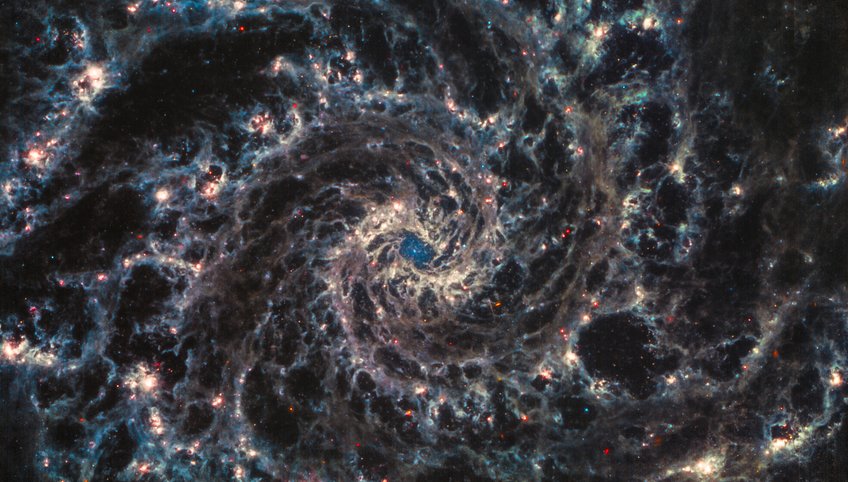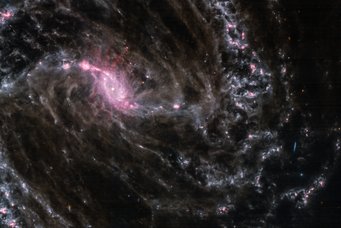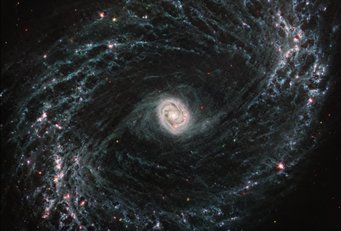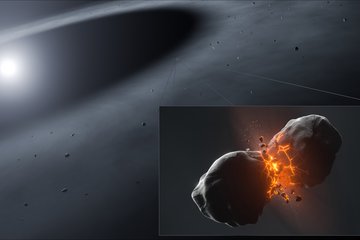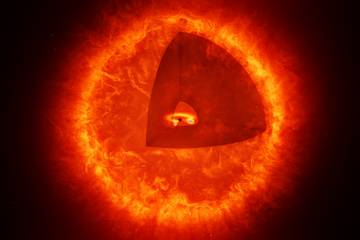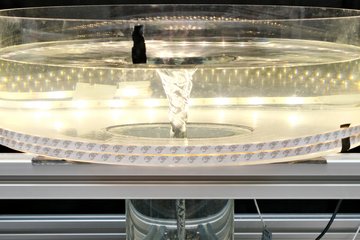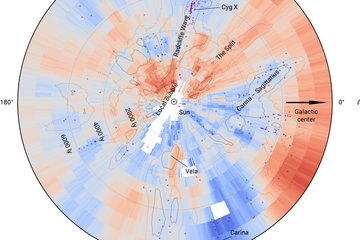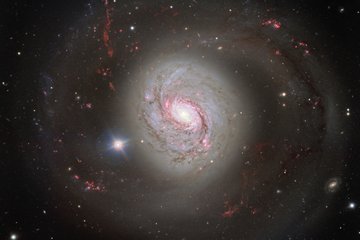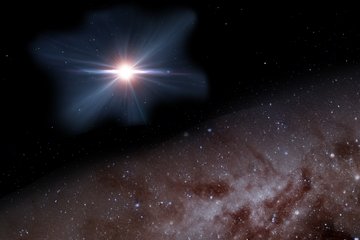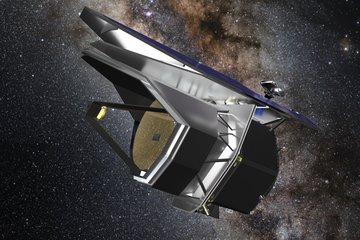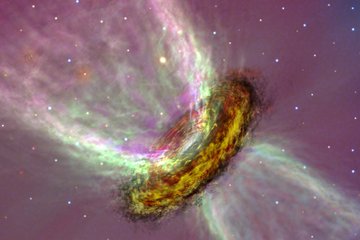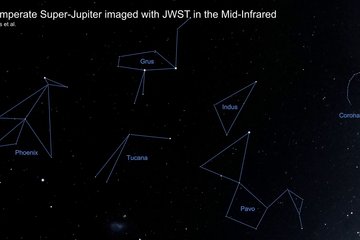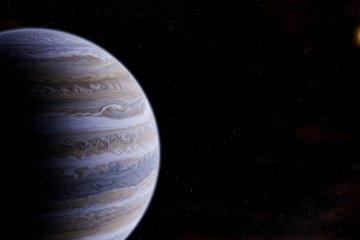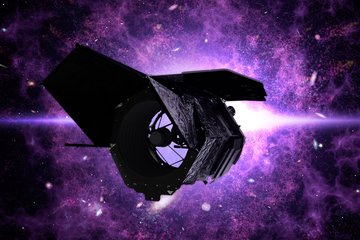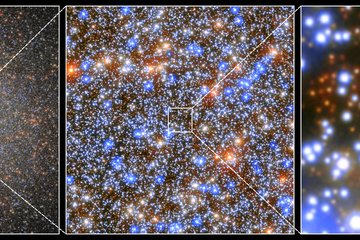The James Webb Space Telescope Reveals Intricate Networks of Gas and Dust in Nearby Galaxies
New insight into where stars are being born in galaxies
Researchers using the James Webb Space Telescope (JWST) are getting their first look into how the powerful infrared telescope will uncover the missing pieces of the star formation puzzle in nearby galaxies. The initial data already provide clues to how some of the smallest scale activities in our universe – the beginnings of star formation — can impact the shapes, structures and dynamics of the largest objects in our universe — the galaxies.
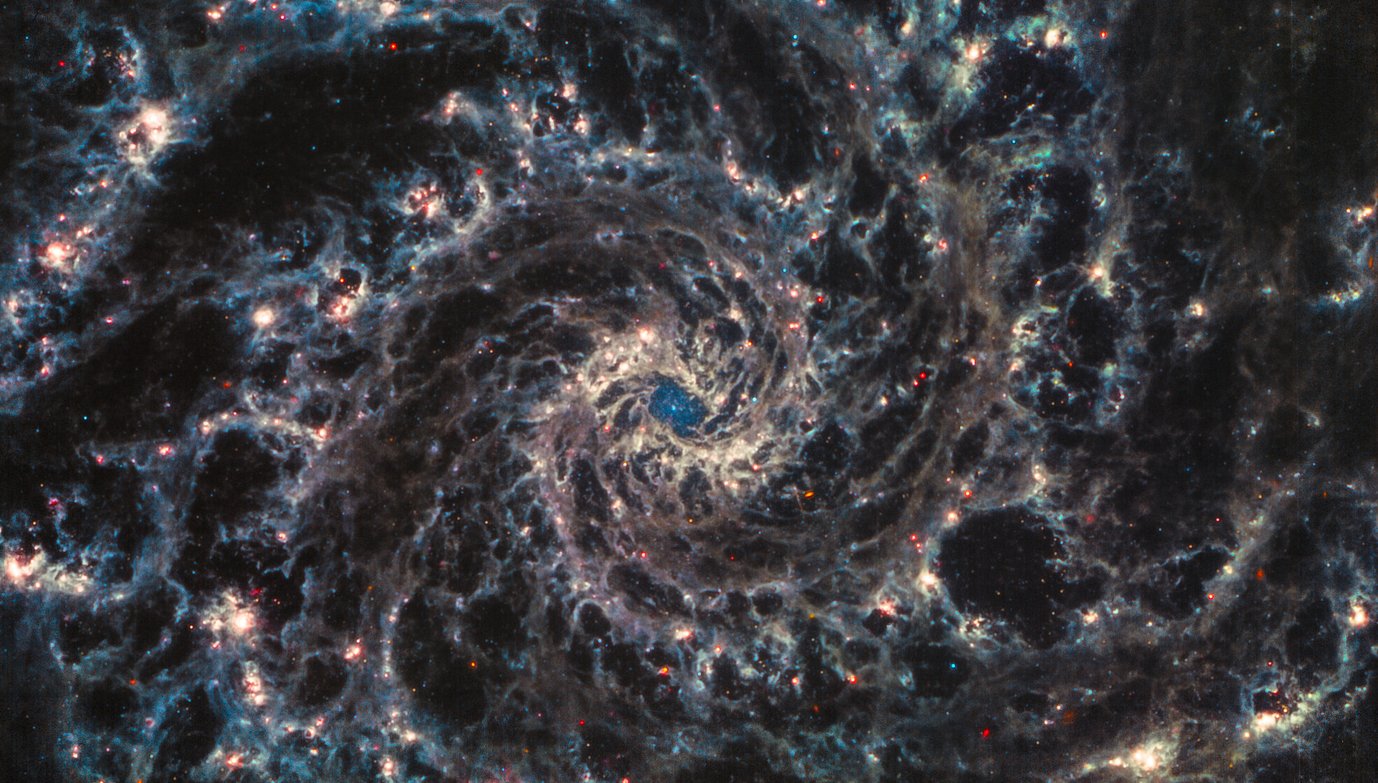
Astronomers from across the globe, including scientists of the Max Planck Institute for Astronomy (MPIA) in Heidelberg, Germany, are collaborating on a project to reveal some of the remaining mysteries of star formation in galaxies. This Treasury survey called Physics at High Angular resolution in Nearby Galaxies with JWST (PHANGS-JWST), led by Janice Lee, Gemini Observatory chief scientist at the National Science Foundation’s NOIRLab in Tucson, Arizona, USA is now taking the next step by analysing the first images of an observing program carried out by the James Webb Space Telescope (JWST). The team’s initial findings, compiled into 21 studies, were recently published in a special focus issue of The Astrophysical Journal Letters.
The team will study 19 face-on galaxies with properties similar to the Milky Way. In JWST’s first few months of science operations, observations of four of those targets — NGC 628 (M 74), NGC 1365, NGC 7496, and IC 5332 — have taken place. The results derived from images taken with JWST’s Near-Infrared Camera (NIRCam) and Mid-Infrared Instrument (MIRI) are already astounding astronomers. NIRCam is a contribution by the University of Arizona. A European consortium of research institutions and industrial partners built MIRI.
“We are especially proud of MPIA’s essential technical contributions to MIRI, such as the imaging device’s filter wheel mechanism,” says Eva Schinnerer, a group leader at MPIA. She leads the overall PHANGS collaboration and is the main author of one of three articles published by MPIA scientists. The MIRI images reveal the presence of a network of highly structured features within these galaxies – bar structures that channel gas towards the centres of those galaxies fuelling star formation, and so-called spurs of cold gas between the spiral arms where stars across the entire mass range form.
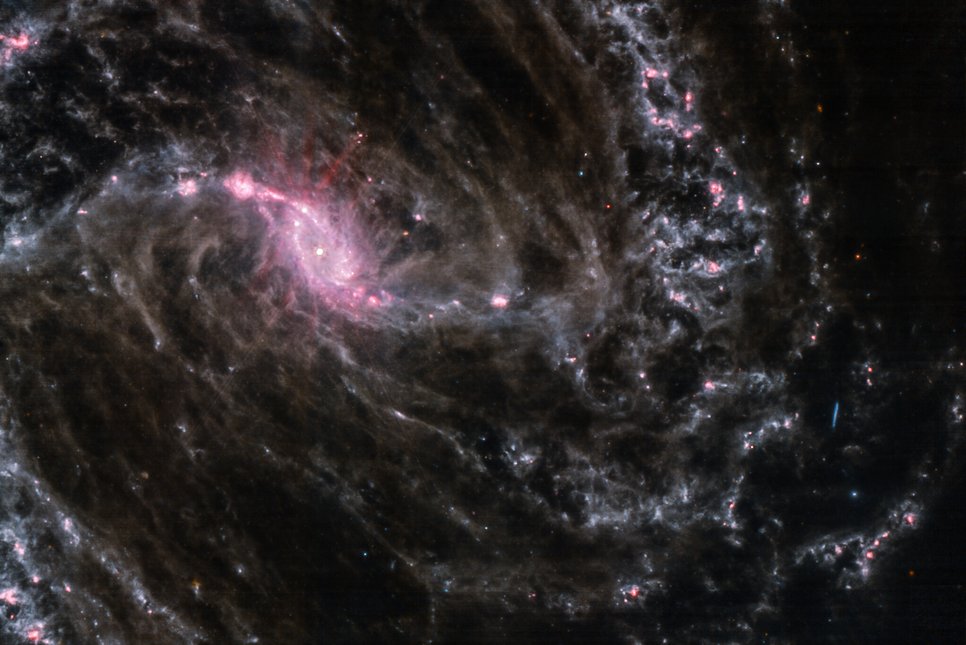
“The clarity in which we are seeing the fine structure certainly caught us by surprise,” says MPIA’s Humboldt Research Awardee Adam Leroy (Ohio State University, USA). “The new PHANGS-JWST data give us a fascinating insight into the star formation of surrounding spiral galaxies at the highest resolution,” MPIA Lise Meitner Group Leader Nadine Neumayer explains.
“The infrared images complement the existing Hubble Space Telescope data from the optical spectral range. They offer views of structures previously obscured by dust,” MPIA’s Nils Hoyer adds. He is the main author of one of the articles published in this suite of studies and a PhD student of the Max Planck IMPRS program at Heidelberg University.
That quality of infrared light has long evaded astronomers — until JWST entered the stage. The PHANGS team has spent years studying these galaxies at optical, radio, and ultraviolet wavelengths using the Hubble Space Telescope, Atacama Large Millimeter/Submillimeter Array, and ESO’s Very Large Telescope’s Multi Unit Spectroscopic Explorer (MUSE). However, a crucial stage of a star’s lifecycle, when it is enshrouded in its natal cocoon by dust and gas, has remained out of view. JWST’s powerful infrared capabilities can pierce through the dust providing the missing puzzle pieces.
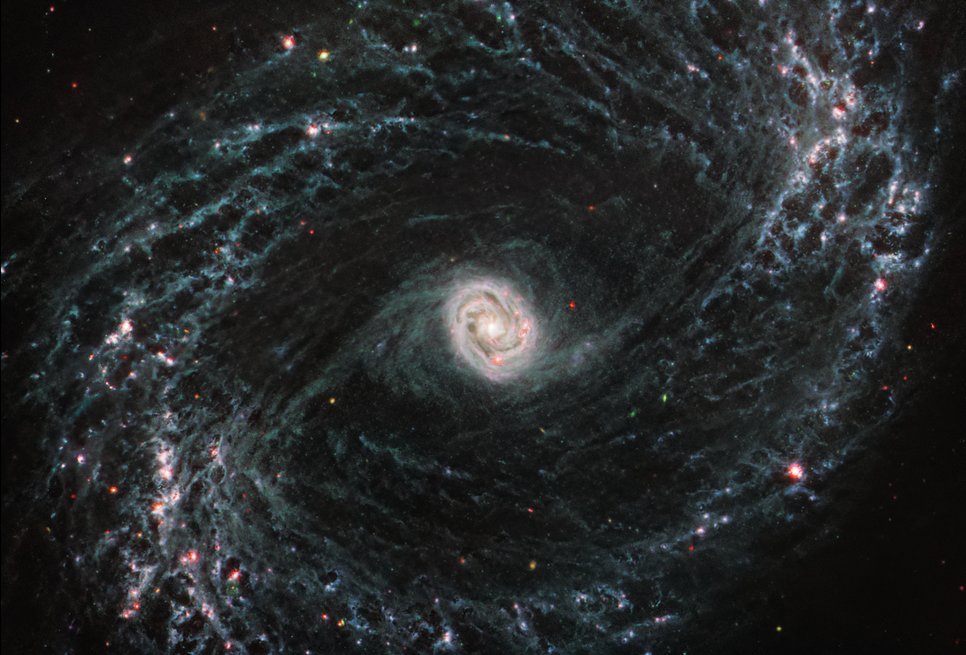
The new JWST images are valuable for our analyses because they reveal the finest structures beyond the directly neighbouring galaxies in the infrared spectral range. One example is the Nuclear Star Clusters (NSCs) in the centres of spiral galaxies. Including the Milky Way’s NSC, the new data already reveal a wide range of diversity from miraculously dormant to dense and massive regions with highly active episodic star formation.
The images uncover interesting and never-before-seen structures, such as in the centre of NGC 628, that we cannot explain so far. “The new perspective JWST gives us on the centres of galaxies contributes fundamentally to our understanding of the evolution of clusters and galaxies,” says Hoyer. “JWST allows us to precisely pinpoint the youngest stars still within their birth clouds in nearby galaxies. This capability enables us to look inside the gas and dust in gas-rich galaxy centres to study where and how inflowing gas is converted into stars, like in NGC 1365, and compare those results to the Milky Way,” Schinnerer specifies.
Another exciting aspect is the discovery of the formation of stars in between the prominent spiral arms. “Our earlier observations had already indicated this might be the case,” former MPIA scientist Tom Williams points out. He is the main author of the third MPIA-led paper in this focus issue and now working at the University of Oxford, UK. “By leveraging JWST’s unprecedented infrared imaging capability, we finally localised the young stars in ‘spurs’ of gas extending from the spiral arms.”
The initial results demonstrate, as expected, that the star formation rate is higher in the spiral arms. However, the efficiency by which gas is converted into stars appears constant across the galactic disk. Even massive star clusters can form outside the spiral arms, which has been hotly debated before.
Because these observations are taken as part of a Treasury program, they are available to the public as they are observed and received on Earth. The PHANGS team will work to create and release data sets that align the JWST data to each of the complementary data sets obtained previously from the other observatories, all in the name of enhancing the value the data provide to the astronomical community.
Background information
The research by the PHANGS team is being conducted as part of General Observer program 2107.
MPIA scientists involved in these studies are Eva Schinnerer (PHANGS Lead), Nadine Neumayer (MPIA Lise Meitner Group Lead), Anja Feldmeier-Krause, Jonathan Henshaw, Nils Hoyer, Albrecht Kamlah, Justus Neumann, Francisco Nogueras-Lara, Ismael Pessa, Francesca Pinna, Sophia Stuber, and Thomas Williams.
The James Webb Space Telescope is the world’s premier space science observatory. JWST is an international program led by NASA with its partners, ESA (European Space Agency), and CSA (Canadian Space Agency).
This press release is coordinated with and based on a similar sounding article of the Space Telescope Science Institute (STScI) of the same day.
MN
